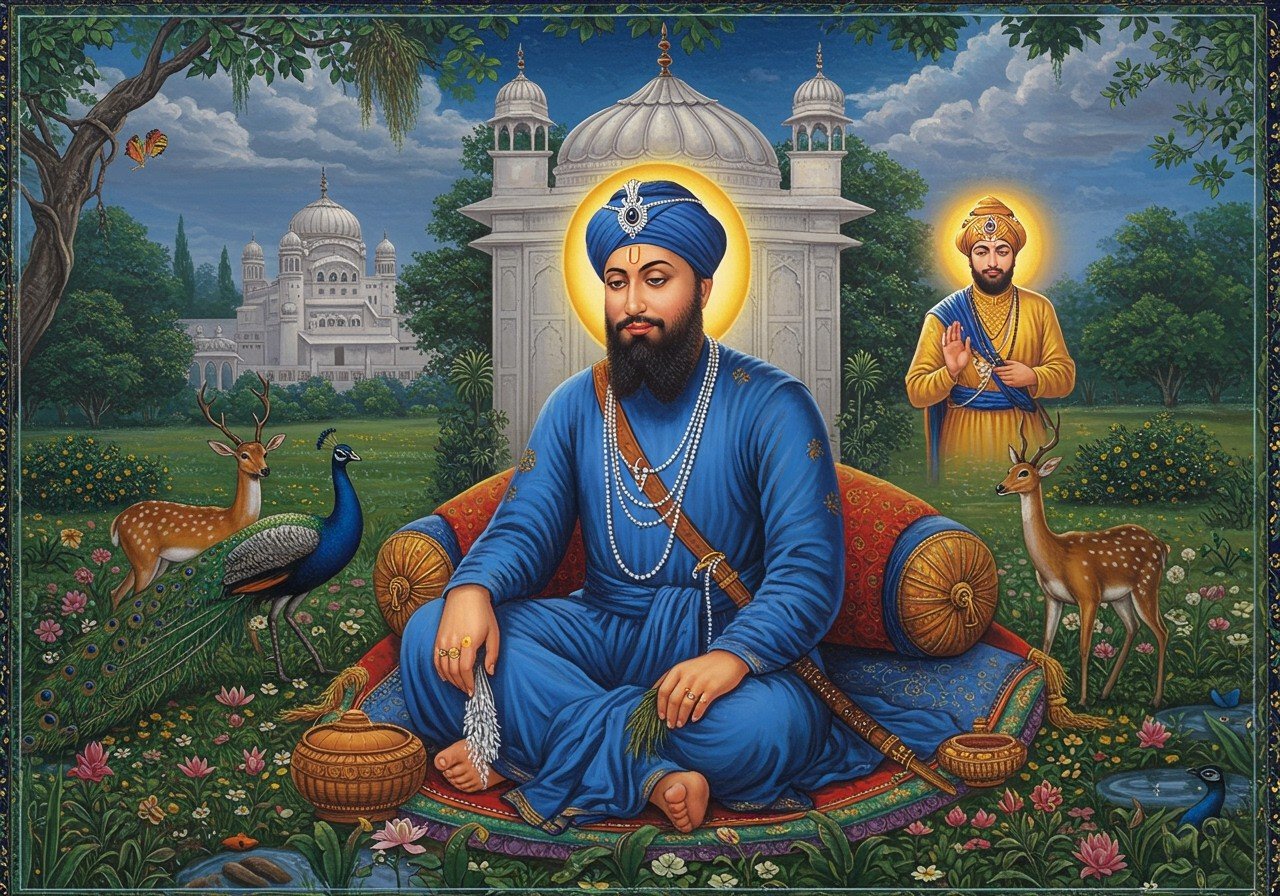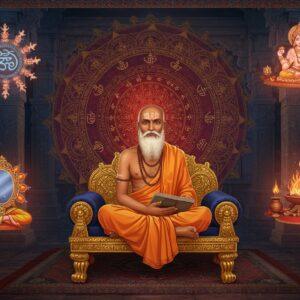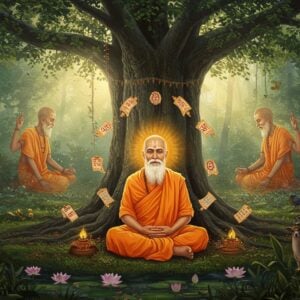
Guru Har Rai, the seventh Sikh Guru, graced this world with his presence from 1644 to 1661. His life was a testament to compassion, spiritual strength, and a deep commitment to the Sikh faith. Born in Kiratpur on January 16, 1630, to Baba Gurditta and Mata Nihal Kaur, he was the grandson of Guru Hargobind, the sixth Guru. He ascended to the Guruship at the young age of 14, on March 3, 1644, inheriting a legacy of both spiritual leadership and military preparedness.
A Balancing Act: Military Strength and Peaceful Intentions
Guru Har Rai skillfully balanced the need for military readiness with a deep commitment to peace. Following the tradition of his grandfather, he maintained a force of 2,200 mounted soldiers and even constructed a fort in Patalgarh for weapons storage. However, his true strength lay in his peace-loving nature, always striving to avoid conflict. He believed in the power of diplomacy and peaceful resolution, showcasing his wisdom and foresight in navigating the complex political landscape of 17th-century India. His leadership inspired his followers to uphold dharma while maintaining a peaceful disposition.
A Heart of Compassion: Healing and Service
Guru Har Rai’s compassion extended to all beings. He established a dispensary in Kiratpur, offering free treatment to those in need. He passionately advocated for integrating healthcare with langar, demonstrating his commitment to holistic well-being. His love for nature led him to create a sanctuary for endangered animals, a truly remarkable act of conservation centuries ahead of its time. Guruji saw seva (selfless service) as integral to spiritual growth.
A poignant example of Guru Har Rai’s kindness is his interaction with the Mughal prince, Dara Shikoh. When Dara Shikoh fell ill, the Guru sent him herbal medicines, showcasing his compassion irrespective of political affiliations. While this act earned Aurangzeb’s disfavour, it solidified Guru Har Rai’s reputation for selfless service. You can find similar high-quality Chandan (sandalwood) at Poojn.in, perfect for your daily prayers and rituals.
Spiritual Legacy: Kirtan and Community
Guru Har Rai nurtured the Sikh community’s spiritual growth through kirtan (devotional singing) and congregational worship. These practices fostered unity and effectively disseminated spiritual teachings. He masterfully blended tradition with innovation, ensuring the community’s resilience during challenging times. He emphasized the importance of inner peace and connection with the divine, inspiring generations of Sikhs. Read more about the spiritual journey and finding your Guru here.
Succession and Legacy: Passing the Torch
Guru Har Rai had two sons, Ram Rai and Har Krishan. He chose his younger son, Har Krishan, to be the eighth Guru, recognizing his spiritual maturity. This decision underscored his deep understanding of spiritual lineage and the importance of choosing a successor based on wisdom and divine insight. Guru Har Rai passed away peacefully on October 6, 1661, in Kiratpur Sahib. His legacy of compassion, service, and spiritual strength continues to inspire Sikhs worldwide.
Honoring the Legacy: Ritual Items for Remembrance
Poojn.in, India’s largest Dashakarma Bhandar, offers a wide selection of authentic items to honor Guru Har Rai’s memory and uphold Sikh traditions. You can find everything you need, from pure cotton Rumala Sahib for the Guru Granth Sahib to brass Karahis for preparing Karah Prasad. We also offer traditional jots (oil lamps) and high-quality Chaur Sahibs made from authentic materials. Our stainless steel Achmani spoons and brass Darpans (mirrors) are ideal for maintaining the sanctity of your personal altar.
All items are carefully sourced and packaged to ensure purity and authenticity. We offer convenient delivery across India. Visit www.poojn.in to explore our collection or contact us for assistance. We understand the deep significance of these items and are committed to providing you with the highest quality products for your spiritual needs.
Explore other Divine legacies, temples, legends, and rituals.
Common Questions about Guru Har Rai
How did Guru Har Rai pass away? Guru Har Rai’s death, at the relatively young age of 31, was a peaceful one. Historical records do not indicate any specific illness or injury.
What was the cause of his death? While the exact cause isn’t explicitly documented, it is generally accepted that he passed away from natural causes.
Who became the next Guru? Guru Har Rai’s younger son, Guru Har Krishan, succeeded him as the eighth Sikh Guru.
Did Guru Har Rai have children? Yes, he had two sons, Ram Rai and Har Krishan.
Why was Har Krishan chosen as his successor? Despite his young age, Guru Har Rai recognized a profound spiritual wisdom and divine light in Har Krishan, leading him to choose him as the next Guru.
How old was Har Krishan when he became Guru? Guru Har Krishan was only five years old when he ascended to the Guruship.
How is Guru Har Rai remembered? Guru Har Rai’s legacy is one of compassion, selfless service, and unwavering dedication to the Sikh faith. He is deeply revered for his contributions to the growth of Sikhism and his commitment to the teachings of his predecessors.


